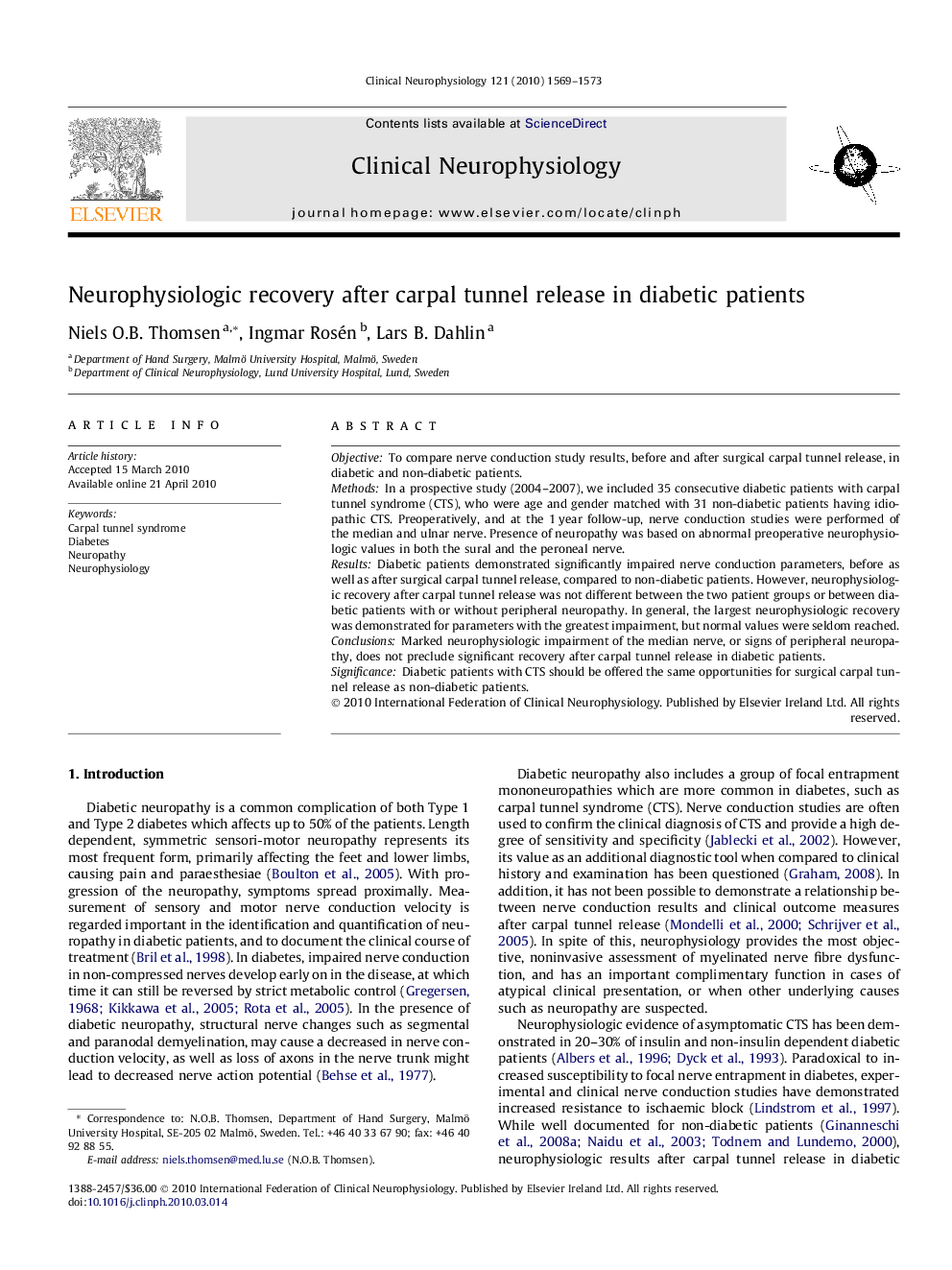| Article ID | Journal | Published Year | Pages | File Type |
|---|---|---|---|---|
| 3045604 | Clinical Neurophysiology | 2010 | 5 Pages |
ObjectiveTo compare nerve conduction study results, before and after surgical carpal tunnel release, in diabetic and non-diabetic patients.MethodsIn a prospective study (2004–2007), we included 35 consecutive diabetic patients with carpal tunnel syndrome (CTS), who were age and gender matched with 31 non-diabetic patients having idiopathic CTS. Preoperatively, and at the 1 year follow-up, nerve conduction studies were performed of the median and ulnar nerve. Presence of neuropathy was based on abnormal preoperative neurophysiologic values in both the sural and the peroneal nerve.ResultsDiabetic patients demonstrated significantly impaired nerve conduction parameters, before as well as after surgical carpal tunnel release, compared to non-diabetic patients. However, neurophysiologic recovery after carpal tunnel release was not different between the two patient groups or between diabetic patients with or without peripheral neuropathy. In general, the largest neurophysiologic recovery was demonstrated for parameters with the greatest impairment, but normal values were seldom reached.ConclusionsMarked neurophysiologic impairment of the median nerve, or signs of peripheral neuropathy, does not preclude significant recovery after carpal tunnel release in diabetic patients.SignificanceDiabetic patients with CTS should be offered the same opportunities for surgical carpal tunnel release as non-diabetic patients.
